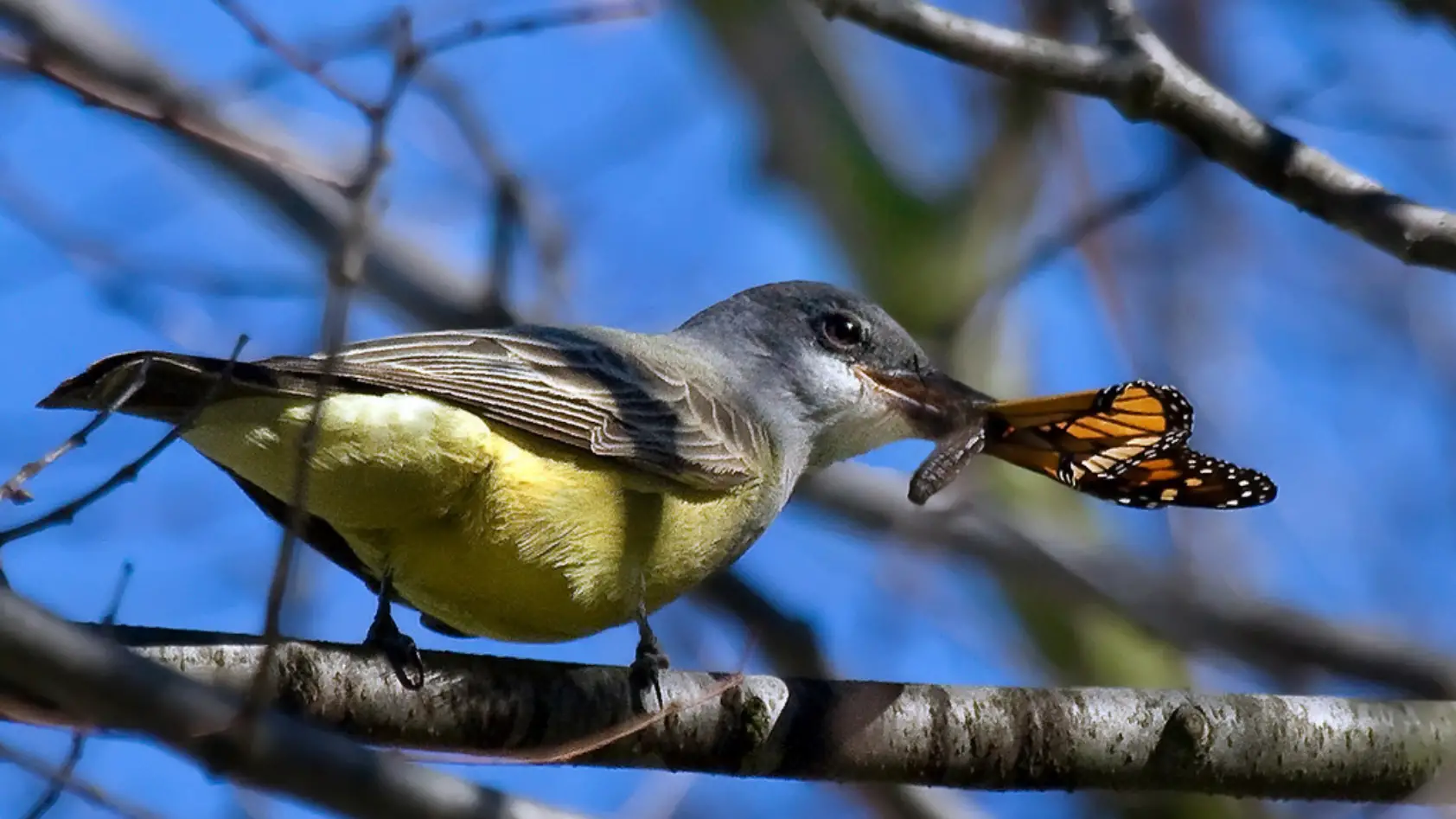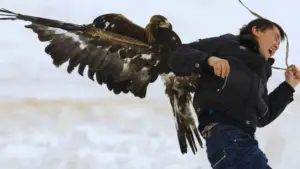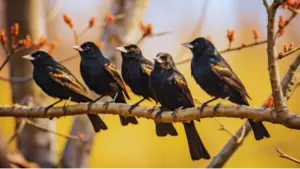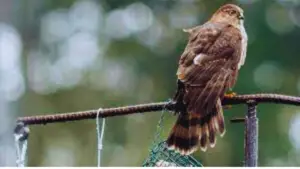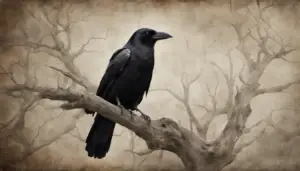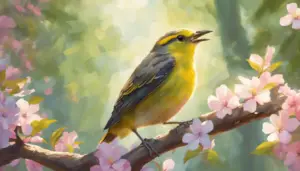Do birds eat butterflies? The answer is both yes and no. Some birds will eat butterflies, while others will avoid them. The type of bird and the size of the butterfly are both factors that will affect whether or not a bird will eat a butterfly.
Imagine a world where delicate butterflies dance through the air, their vibrant colors painting the sky. Now picture a predator lurking, ready to snatch those graceful creatures from their ephemeral existence.
Birds, the majestic rulers of the skies, possess both beauty and ruthlessness. Have you ever wondered if birds feast on these fragile butterflies?
In this article, we will unravel the predatory habits of avians and explore their complex relationship with butterflies. By delving into the hunting techniques of avian predators and understanding their dietary preferences, we will uncover the factors that influence bird prey selection.
Discover the bird species that prey on butterflies and learn about the defense mechanisms that butterflies have developed to survive in this dangerous world.
Join us in unraveling the captivating connection between birds and butterflies and gaining a deeper appreciation for the importance of these creatures in our ecosystem. Together, let us embark on a journey to protect both butterflies and birds, ensuring their survival for generations to come.
Key Takeaways
- Avian predators, such as birds, have developed hunting techniques to catch butterflies, including aerial hunting and ambushing.
- Factors such as size, availability, color, and behavior influence bird prey selection, with larger birds going for larger prey and birds being attracted to brightly colored or patterned prey.
- Butterflies have developed a variety of adaptations and behaviors to evade bird predators, including erratic flight patterns and the development of vivid colors or patterns as warning signals.
- Bird predation on butterflies can have significant ecological impacts, including reducing butterfly populations, disrupting ecosystems, and affecting plant diversity and pollination.
Avian Predators and their Hunting Techniques
Birds, with their sharp talons and keen eyesight, are masters of the sky, swooping down on unsuspecting prey with lightning speed. Avian predators have developed various hunting techniques to capture their meals, including those involving butterflies.
Aerial hunting is a typical method that birds use to catch butterflies. They take advantage of their agility and speed to chase after these delicate insects in mid-air. With their keen eyesight, they spot the fluttering wings of butterflies from afar, carefully calculating their trajectory to intercept them. Once they are within range, birds use their sharp talons to snatch the unsuspecting butterflies out of the air.
Another hunting technique employed by certain bird species is ambushing. These birds, such as the shrikes and flycatchers, perch on branches or wires, patiently waiting for butterflies to come within striking distance. When a butterfly ventures too close, the bird swiftly launches itself towards its prey, capturing it in its beak before it even has a chance to react.
While birds are primarily insectivorous, their diet varies depending on the species and available food sources. Butterflies, with their vibrant colors and delicate appearance, may be seen as enticing targets for some avian predators. However, it is important to note that not all birds eat butterflies and their consumption may differ based on their specific ecological niche and dietary preferences.
The Diet of Birds: Exploring their Feeding Habits
Indulge yourself in the fascinating world of avian cuisine as you explore the delicate palates of these aerial connoisseurs. Birds have a diverse diet, and their feeding habits vary depending on the species and their environment. Here are three intriguing aspects of their feeding behavior that will surely captivate your imagination:
- Versatility: Birds have a remarkable ability to adapt their diet to the available resources. From seeds and fruits to insects and small animals, they can switch between a wide range of food sources. Witnessing a tiny hummingbird extracting nectar from a flower or a majestic eagle swooping down to catch a fish can truly leave you in awe.
- Specialization: Some bird species have evolved to specialize in consuming specific types of food. For instance, the woodpecker’s strong beak and long tongue are perfectly designed to extract insects from tree barks. Meanwhile, the flamingo’s uniquely shaped bill allows it to filter tiny organisms from shallow water bodies, showcasing nature’s ingenuity at its finest.
- Hunting techniques: Birds employ various hunting techniques to catch their prey. From the stealthy approach of an owl to the acrobatic dives of a falcon, each species has its own unique strategy. Witnessing these aerial predators in action is a thrilling spectacle that highlights the remarkable agility and precision of birds.
So, dive into the world of birds’ feeding habits, and prepare to be amazed by the remarkable diversity and ingenuity of their culinary choices.
Understanding Bird-Butterfly Interactions
Prepare to be enchanted as you witness the captivating dance between butterflies and their feathered companions. Birds and butterflies have a complex relationship, with birds often being opportunistic predators of these delicate insects.
While not all bird species eat butterflies, many do. It is not uncommon to see a bird swoop down and snatch a butterfly mid-flight. Some birds, like the Eastern Kingbird, are known for their agility and skill in catching butterflies. They have been observed performing acrobatic maneuvers in the air to capture their prey.
To further understand the bird-butterfly interactions, let’s explore a table that showcases some bird species and their known predation on butterflies:
| Bird Species | Butterfly Predation |
|---|---|
| Eastern Kingbird | High |
| American Kestrel | Moderate |
| Yellow Warbler | Low |
| Great Blue Heron | Rare |
As you can see, the level of butterfly predation varies among different bird species. While some birds have a high predation rate, others have a low or even rare predation rate.
So next time you see a bird fluttering about, remember that it may have its eyes set on the delicate beauty of butterflies. The intricate dance between these creatures continues to fascinate and captivate observers, reminding us of the intricate web of life in nature.
Factors Influencing Bird Prey Selection
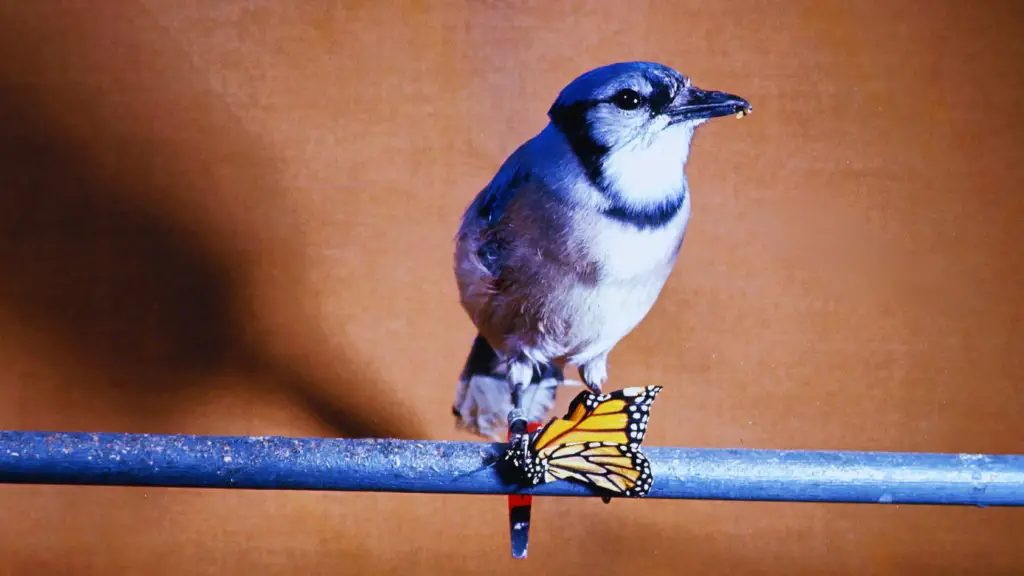
Birds, with their varied diet, have developed sophisticated strategies for selecting their prey. One key factor that influences bird prey selection is the size of the prey. Larger birds tend to go for larger prey, while smaller birds opt for smaller prey. This is because larger birds have stronger beaks and can handle larger prey more efficiently.
Another factor is the availability of the prey. Birds tend to select prey that is abundant in their environment, as it provides a reliable source of food.
The color and pattern of the prey also play a role in bird prey selection. Birds are often attracted to brightly colored or patterned prey, as they stand out and are easier to spot.
Additionally, the behavior of the prey can influence bird selection. Birds are more likely to go after prey that is slow-moving or easily caught, as it requires less energy and effort.
These factors, along with others such as habitat and seasonality, all contribute to the complex decision-making process that birds go through when selecting their prey.
Bird Species that Prey on Butterflies
Discover the astonishing array of bird species that can’t resist feasting on the delicate and vibrant beauty of butterflies. These winged creatures, known for their graceful flight and mesmerizing colors, are not only admired by humans but also attract the attention of various avian predators.
Birds are opportunistic hunters, and their prey selection is influenced by factors such as availability, abundance, and ease of capture. While butterflies may not be the primary food source for most bird species, many birds do include them in their diet. Some bird species have even developed specialized hunting techniques to catch these elusive insects.
The table below showcases four bird species known to prey on butterflies:
| Bird Species | Habitat | Hunting Techniques |
|---|---|---|
| Swallowtail Kite | Wetlands | Soaring and diving |
| Blue Jay | Woodlands | Quick strikes |
| Eastern Phoebe | Open areas | Perch and pounce |
| Black-capped Chickadee | Forests | Ambush and snatch |
These birds have adapted their hunting strategies to successfully catch butterflies, taking advantage of their agility and delicate nature. Although it may seem counterintuitive for creatures as beautiful as birds to prey on butterflies, it is a natural part of the intricate web of life. So next time you spot a butterfly fluttering by, remember that it is not only admired by humans but also sought after by these avian predators, adding another layer of wonder to their ethereal existence.
Hunting Strategies of Avian Predators
When you witness the awe-inspiring hunting strategies of avian predators, you can’t help but be captivated by their cunning and skill. These birds have evolved various techniques to catch their prey, including butterflies.
One common strategy is aerial hunting, where the bird flies high in the sky, scanning the surroundings for any movement. Once a butterfly is spotted, the predator dives down with incredible speed, using its sharp beak to snatch the unsuspecting prey mid-air. This swift and precise maneuver leaves little chance for the butterfly to escape.
Another hunting strategy employed by avian predators is ambush hunting. Birds like the shrikes and flycatchers perch on branches or wires, patiently waiting for a butterfly to come within range. When the moment is right, they launch themselves at lightning speed, securing the butterfly in their grasp before it can react. Some birds even use their wings to create a distraction, confusing the butterfly and making it an easy target.
It’s truly fascinating to observe these hunting strategies in action, showcasing the remarkable adaptability and intelligence of avian predators.
Impact of Bird Predation on Butterfly Populations
Imagine yourself as a delicate butterfly fluttering through a tranquil meadow when suddenly, the sharp talons of aerial hunters, the predators of the sky, ensnare you. Birds, with their keen eyesight and swift flying abilities, have a significant impact on butterfly populations. Here are four ways in which bird predation affects these beautiful insects:
- Decreased population: Birds feed on butterflies as a natural part of their diet, resulting in a decline in their numbers. This can disrupt the delicate balance of ecosystems, as butterflies play a crucial role in pollination and serve as a food source for other organisms.
- Altered behavior: The fear of being hunted by birds forces butterflies to modify their behavior. They tend to fly in erratic patterns, making it harder for predators to capture them. This adaptation can affect their ability to find food and mates.
- Evolutionary pressure: The constant threat of predation has exerted evolutionary pressure on butterflies to develop various defense mechanisms. Some species have evolved bright colors or patterns to warn potential predators about their toxicity or bad taste.
- Impact on plant diversity: As birds prey on butterflies, they indirectly influence plant diversity. Butterflies are important pollinators, and their reduced numbers can lead to a decrease in the pollination of certain plant species, affecting their survival and ability to reproduce.
Next time you spot a bird soaring through the sky, remember the vital role they play in shaping butterfly populations and the intricate web of life in our natural world.
Butterfly Defense Mechanisms against Avian Predators
Butterflies have developed remarkable defense mechanisms to outsmart their sky-bound predators. When it comes to dealing with avian predators, butterflies have a few tricks up their delicate wings.
One of their most effective defense strategies is their vibrant coloration. Many butterfly species have evolved bright and striking patterns on their wings, serving as a warning sign to potential predators. These colors act as a visual deterrent, signaling that the butterfly is toxic or unpalatable. Birds, being intelligent creatures, quickly learn to associate these colors with an unpleasant taste or even toxicity, and they avoid preying on these butterflies altogether.
Butterflies also have another clever trick to evade avian predators – their flight patterns. When a bird is in pursuit, butterflies can swiftly change their flight direction, making it difficult for the predator to track and catch them. Some butterfly species are also known to fly erratically, making sudden twists and turns in mid-air. This unpredictability confuses and disorients the bird, giving the butterfly a chance to escape.
In addition to their visual displays and flight maneuvers, butterflies have physical defense mechanisms as well. Some species have spines or barbs on their wings or bodies, making them unappealing or even painful to touch. Others have evolved to mimic the appearance of toxic or unpalatable species, further deterring bird predators.
Overall, butterflies have developed a range of defense mechanisms to protect themselves against avian predators. Their vibrant colors, erratic flight patterns, and physical adaptations all contribute to their survival in the face of constant predation pressure from birds.
Importance of Butterflies in Bird Diets
The presence of butterflies in the diet of various avian species is crucial for maintaining a delicate ecological balance and ensuring the health and vitality of bird populations. Birds rely on butterflies as an important source of food, as they provide essential nutrients and energy. Butterflies are rich in protein, which is vital for the growth and development of young birds. Additionally, butterflies are often abundant and easily accessible, making them a convenient and reliable food source for birds.
Butterflies also play a significant role in the reproduction of avian species. Many birds require high-quality food during the breeding season to successfully raise their offspring. Butterflies, with their nutritious bodies, provide the necessary sustenance for parent birds to produce healthy chicks. The abundance of butterflies in an ecosystem can directly impact the reproductive success of birds, ensuring the continuation of their populations.
Furthermore, butterflies contribute to the overall biodiversity and stability of ecosystems. As pollinators, they facilitate the reproduction of plants and promote the growth of diverse plant species. This, in turn, supports a wide range of bird species that rely on specific plants for food and shelter. The presence of butterflies in bird diets helps maintain a healthy ecosystem by promoting plant diversity and ensuring the survival of both plants and birds.
In conclusion, butterflies play a vital role in the diet of avian species, providing essential nutrients, supporting reproductive success, and contributing to the overall health of ecosystems. The delicate balance between butterflies and birds highlights the interconnectedness of species and emphasizes the importance of conservation efforts to preserve their populations and habitats.
Conservation Implications: Protecting Butterflies and Birds
To protect the delicate balance between butterflies and birds in our ecosystems, you should actively support conservation efforts. Studies have shown that the decline in butterfly populations has resulted in a 58% decrease in bird diversity in certain areas. This decline in bird diversity can have far-reaching consequences for the overall health of our ecosystems.
Conservation efforts aimed at protecting butterflies and birds involve creating and maintaining suitable habitats for both species. One way to do this is by planting native plants that serve as host plants for butterflies and provide food sources for birds. Additionally, reducing the use of pesticides and herbicides can help preserve butterfly populations by ensuring the availability of their food sources.
By actively supporting butterfly and bird conservation, you are not only helping to preserve the beauty and diversity of these species but also supporting the health of our ecosystems as a whole. Butterflies play a crucial role in pollination, while birds help control insect populations and disperse seeds. Without these important interactions, the balance of our ecosystems can be disrupted, leading to negative consequences for other plant and animal species.
So, take action today by supporting local conservation organizations, participating in citizen science projects, and spreading awareness about the importance of protecting butterflies and birds. Together, we can make a difference and ensure a vibrant and thriving ecosystem for future generations.
The Fascinating Relationship between Birds and Butterflies
Now let’s dive into the fascinating relationship between birds and butterflies. You might be surprised to learn that these two seemingly delicate creatures have a complex interaction that goes beyond mere predator and prey. Birds and butterflies have evolved together over time, creating a unique dynamic in the natural world.
Firstly, birds play a crucial role in the life cycle of butterflies. They inadvertently help with pollination by transferring pollen from flower to flower while feasting on nectar. This interaction benefits both parties, as birds get a sugary treat and butterflies ensure the reproduction of their plant hosts.
Secondly, some bird species have developed a taste for butterfly larvae. While this may seem like a threat to butterfly populations, it actually helps maintain a balance in ecosystems. By preying on caterpillars, birds help control their numbers and prevent overpopulation.
Lastly, birds have even developed clever hunting strategies to catch butterflies in flight. They use their agile flying skills and sharp eyesight to snatch these colorful insects mid-air, showcasing their adaptability and intelligence.
In summary, the relationship between birds and butterflies goes beyond a simple predator-prey dynamic. It is a complex dance of mutual benefit and adaptation. These interactions highlight the interconnectedness of different species and the delicate balance of nature.
- Birds inadvertently assist in pollination
- Some bird species prey on butterfly larvae
- Birds have developed hunting strategies for catching butterflies in flight
- This relationship showcases the adaptability and intelligence of birds
- It highlights the interconnectedness and balance of nature
Do Birds Eat Butterflies: FAQs
What is the average lifespan of a butterfly?
The average lifespan of a butterfly is usually just a few weeks to a few months. During this time, they go through the stages of egg, caterpillar, pupa, and finally emerge as a beautiful butterfly.
How do butterflies communicate with each other?
Butterflies communicate with each other through a combination of visual signals and chemical scents. They use their vibrant colors, wing patterns, and pheromones to attract mates, establish territory, and warn off predators.
Do butterflies have any natural predators other than birds?
Butterflies have natural predators other than birds. These predators include spiders, wasps, ants, and certain insect-eating mammals. They use various strategies like camouflage and toxic chemicals to protect themselves from these predators.
Are there any bird species that specifically rely on butterflies as their main food source?
Just like a hungry lion stalking its prey, there are no bird species that specifically rely on butterflies as their main food source. Birds have a diverse diet that includes insects, seeds, fruits, and even small mammals.
Can birds become immune to the toxins produced by some butterfly species?
Birds can develop immunity to toxins produced by certain butterfly species. This adaptation allows them to eat these butterflies without being affected by the toxins, making them less susceptible to harm.
Conclusion
Do birds eat butterflies? Unraveling the predatory habits of avians.
Birds, known for their diverse diets, have been observed to prey on butterflies. These avian predators employ clever hunting techniques to catch their fluttering prey. However, butterflies are not defenseless. They have their own mechanisms to ward off bird attacks. This fascinating relationship between birds and butterflies can be likened to a dance in the sky. Picture the graceful fluttering of colorful butterflies, juxtaposed with the agile swooping of birds, creating a spectacle that is truly awe-inspiring.

